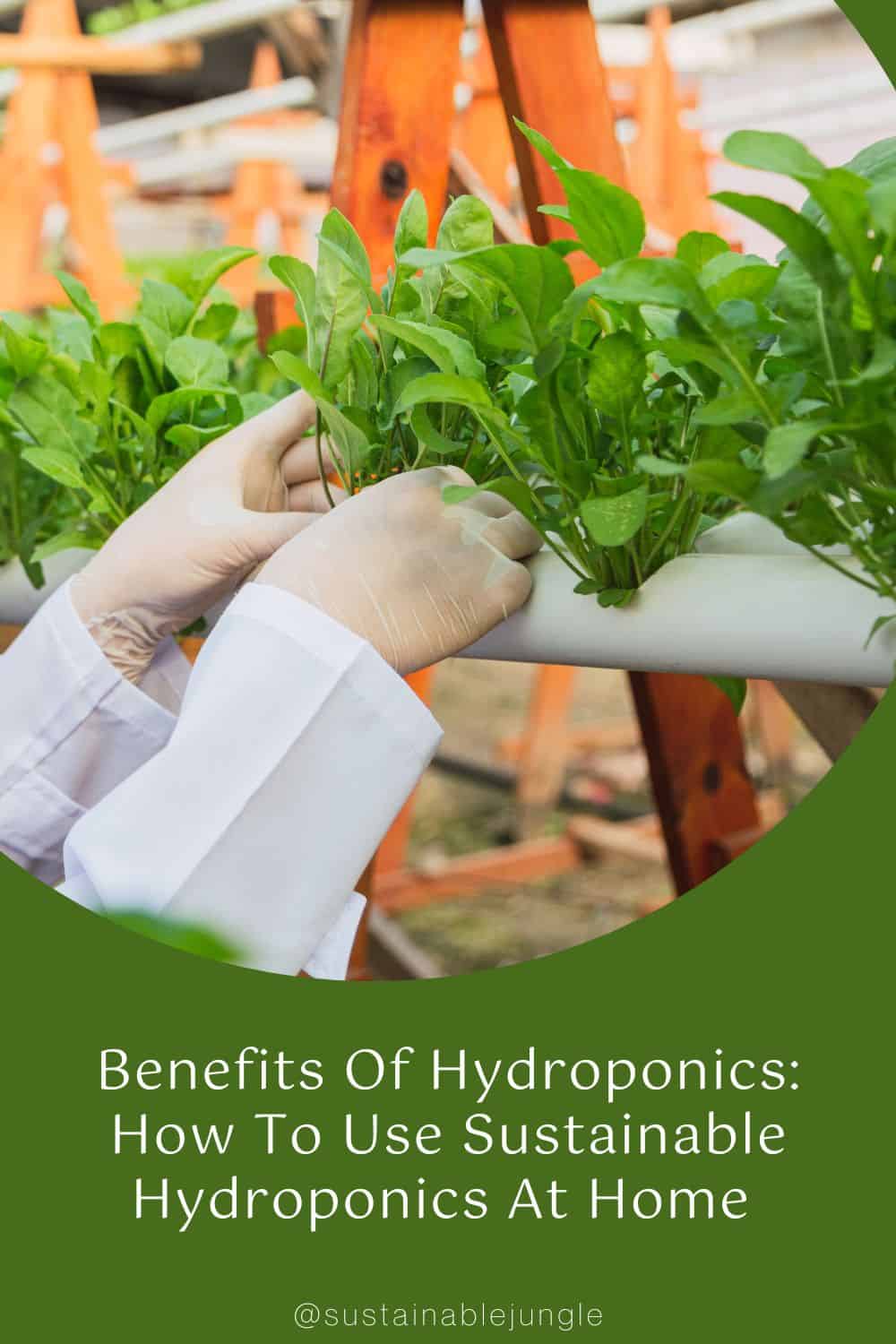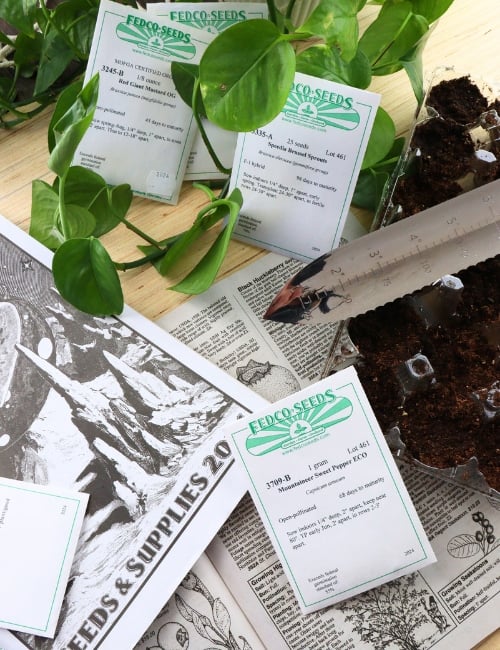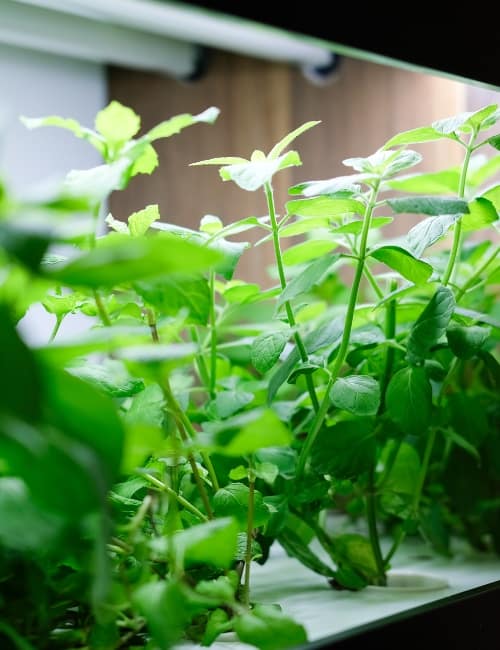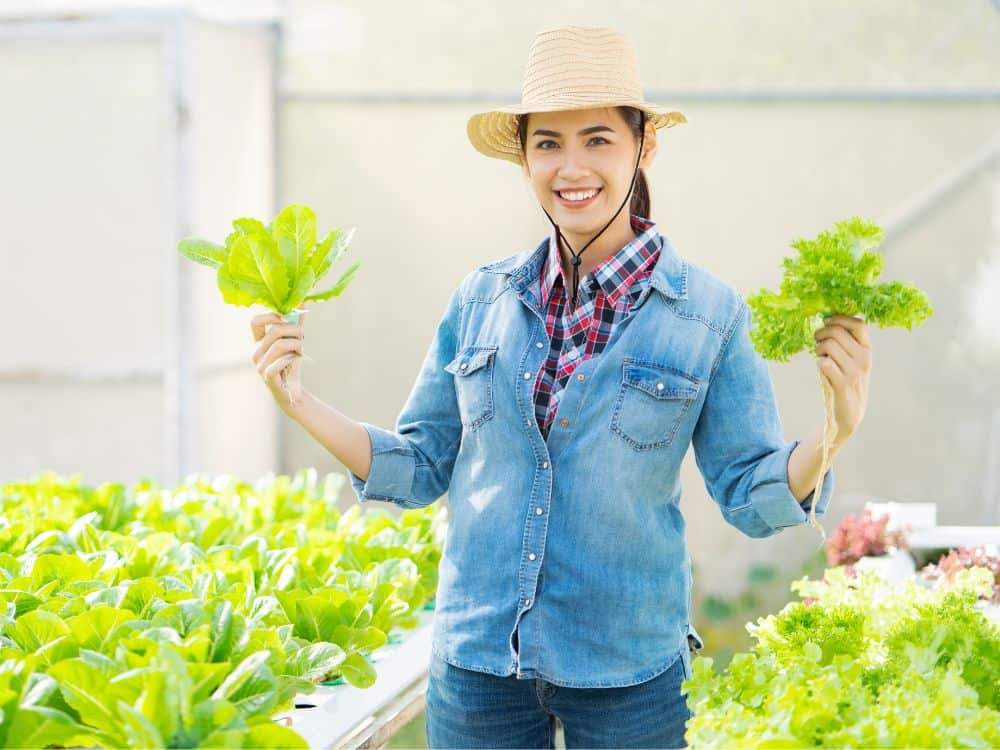
Benefits Of Hydroponics: How To Use Sustainable Hydroponics At Home
Here’s the “dirt”.
By 2050 humans will need to increase global food production by 70% to adequately support our expanding population.
Based on the agricultural output of the previous 50 years, we’re nowhere near meeting those needs—and those output numbers are only projected to decrease.
Modern farming techniques rely on harmful genetic modification and chemical fertilizers and pesticides, which negatively impact soil and prevent the robust crop cycles we once had.
Combined with unsustainable irrigation practices (which account for two-thirds of global freshwater usage), pollution, and topsoil depletion, Big Ag is speeding up climate change and the decline of our food supply.
That’s why it’s sow important we adopt more sustainable agriculture practices, like crop rotation, polyculture, permaculture, regenerative agriculture, and hydroponic farming.
Hydroponics are touted as one of the more efficient ways to grow crops, for both individuals and as large-scale warehouse growing operations, but are hydroponics sustainable?
If so, what are the benefits of hydroponics?
The Full List For Using Sustainable Hydroponics In Gardening
1. What Are Hydroponics?
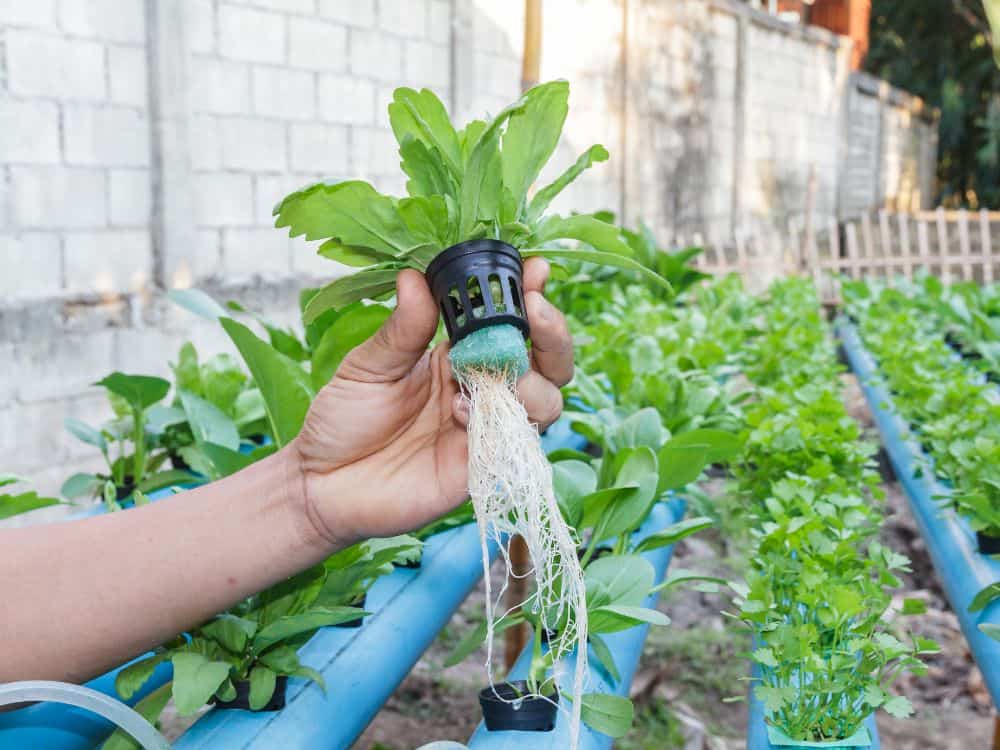
Before we get into the advantages of hydroponics, let’s explore the concept.
The hydroponics definition quite literally means “water working”, with ‘hydro’ coming from the Greek ‘water’ and ‘ponos’ meaning ‘labor’.
It refers to a style of farming and food-growing that occurs with water instead of soil, which has been used by ancient Aztec civilizations and the hanging gardens of Babylon.
This indoor controlled environment farming is sometimes also called greenhouse farming, vertical farming, climate-proof farming, or weather-proof farming.
However, indoor hydroponics takes it a step beyond by eliminating the need of pesticides or soil.
How Does Hydroponics Work?
Plants need three things to grow: water, sunlight, and nutrients.
By using a controlled environment and advanced climate control technology, it’s possible to optimize these inputs for each plant, ensuring maximal, high-quality yields.
This is the root of sustainable hydroponics.
Most commonly, plants are grown in soil, which acts like a conduit for plants to absorb water and nutrients.
With hydroponics, there isn’t soil. Instead, seeds are planted in soil-free mediums like coconut husk to give seedlings a surface to attach roots to.
They then receive essential nutrients through a special water-based solution that accesses the plant’s roots either through submersion or being regularly misted with the nutrient-infused water (AKA aeroponically).
Hydroponics seedlings are often then placed into vertically stacked trays, hence why it’s sometimes called vertical farming.
Sunlight isn’t a core consideration of the hydroponics system, but oftentimes, an indoor hydroponic garden will substitute or altogether replace natural sunlight with LED grow lights tailored to their exact energy requirements.
So, why grow nature in such an unnatural-seeming manner?
2. Hydroponics Benefits
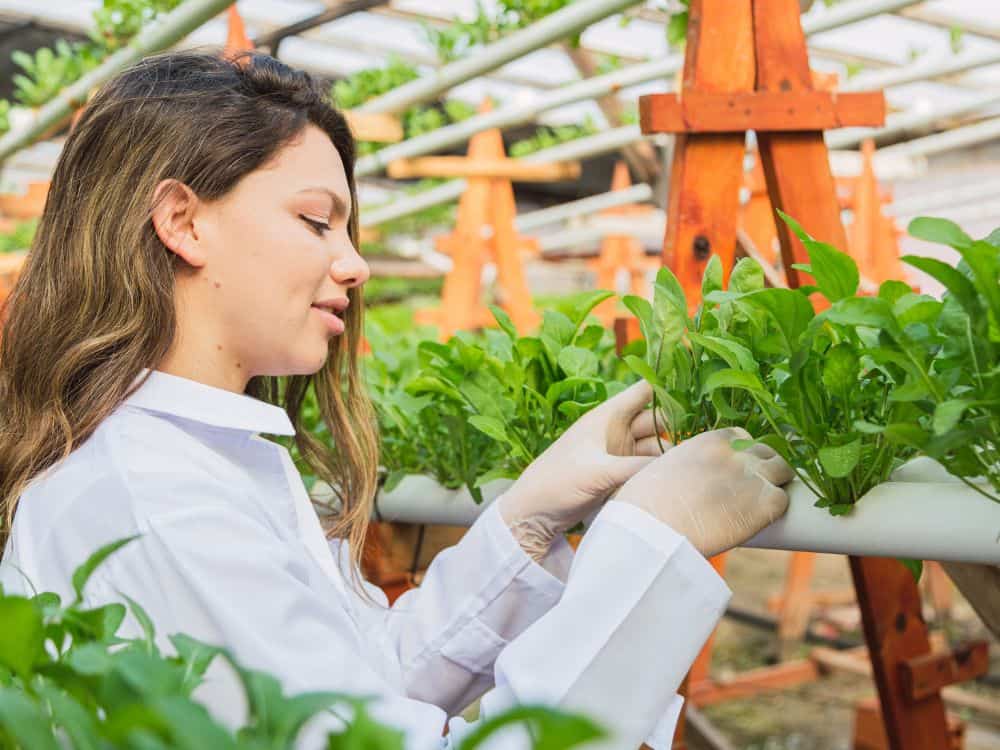
Hydroponic farming is seen as a smart and sustainable solution, since one can implement hydroponics in agriculture operations of all sizes—from industrial-scale farms to a backyard homestead.
But we’re just getting started (er, sprouted) with the benefits of using hydroponics to grow plants:
Water Conservation
It seems logical that a “hydroponic” system would use more water; however, the opposite is true.
Since hydroponic farming recycles and reuses water, it minimizes waste and uses a lot less water than a conventional soil-based farming method.
By delivering water directly to a plant’s roots, little to no evaporation or runoff occurs and plants get the exact dosage of water they require.
As a result, hydroponics actually uses ten times less water than traditional farming methods, making it especially useful in areas facing drought or desertification.
Energy Efficiency
Concerns about the energy requirements of hydroponic systems are reassured by their energy efficiency.
To ensure optimal plant growth, the humidity, temperature, and lighting is carefully managed, which also means excess energy isn’t leaked. Not to mention, LED grow lights are energy efficient and are oftentimes customized to the spectrum of light that the growing crops require.
And as previously mentioned, the water system recirculates water and nutrients and requires minimal energy to pump and distribute water.
As far as heating and cooling goes, most hydroponic greenhouses use energy-efficient systems or renewables.
Land Use Conservation
Hydroponics use vertical growing, which optimizes the total space usage, so that farmers increase productivity while minimizing land use by up to 99%.
A 1.5 acre hydroponic greenhouse can produce an impressive 2.7 million servings of leafy greens per year.
Gotham Greens, for example, has a Brooklyn greenhouse atop a Whole Foods, which is now one of North America’s very largest greenhouse lettuce producers.
This is huge considering 52% of the world’s biodiversity has already been destroyed from agricultural deforestation and monoculture practices.
Plus, since the plants aren’t reliant on soil, the method of farming won’t cause soil erosion and hydroponic greenhouses can be built virtually anywhere—not just where usable soil exists.
Fewer Chemicals
Without soil, weeds can’t grow, and an indoor environment greatly reduces pest and disease risks.
All told, a hydroponic grow system can greatly reduce or ideally eliminate the need for pesticides and herbicides.
Growing Efficiency
Because of their optimal growing environment and nutrient delivery, hydroponics crops can be harvested anywhere, year-round, meaning higher crop yields.
Properly implemented, hydroponics can result in 7 to 14 times more growth cycles—and 240 times more crops!—than conventional approaches.
In advanced systems, sensors measure the nutrient content of the water that each plant consumes to better regulate the nutrients added to the feeding solution, resulting in healthier, bigger, and more nutritious produce.
Accessibility
The suburbanization of supermarkets has created food deserts within cities, which particularly impacts low-income people and those who live in urban areas.
Many hydroponic farms are located in or city centers, which makes it easier for urban communities to access readily available fresh produce.
Better local access to food also means a big reduction in “food miles”.
Thanks to hydroponic farming, produce can get from farm to table in less than 48 hours and transport emissions are greatly reduced as compared to imported fruits and veggies (often more than 50% of a supermarket’s produce selection).
Urban residents in apartments that lack outside gardening space could also easily grow their own food without sacrificing much space using an indoor hydroponic garden.
Hydroponics Disadvantages
We’ve cover(cropped) lots of pros of hydroponics, but are there any downsides?
Aside from a general higher startup cost, there are some crop limitations.
A number of plants cannot properly grow by hydroponics, such as deep-rooted veggies like potatoes, vines, and plants that grow especially tall, like corn.
3. Hydroponics Sustainability
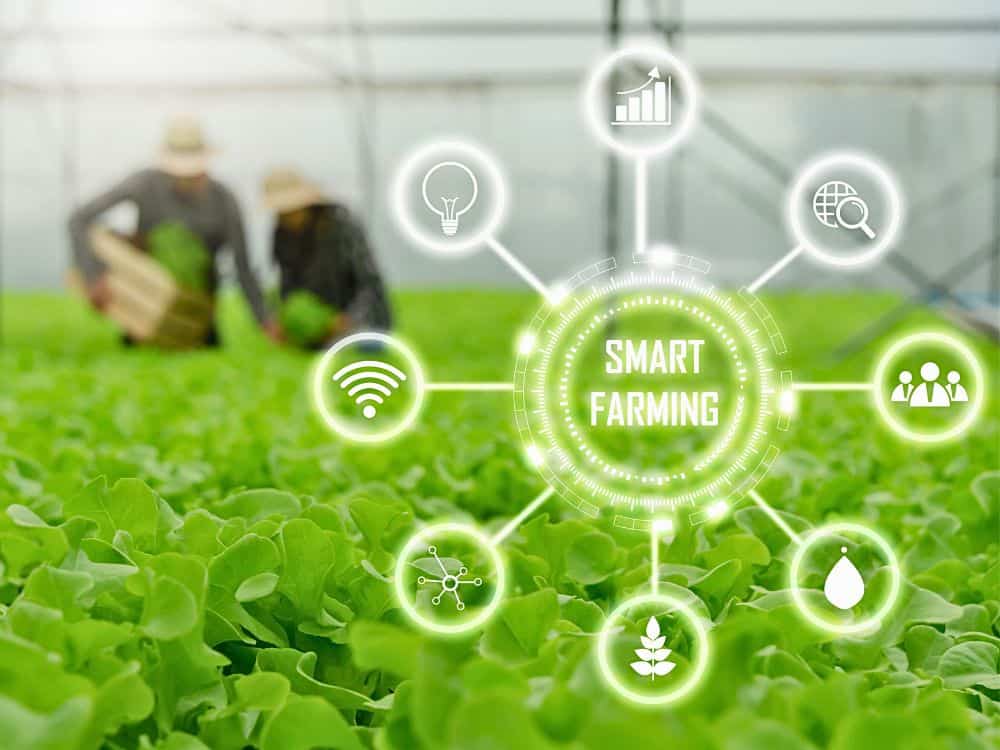
At first glance, maybe a brightly lit industrial-like warehouse doesn’t sound the most natural or eco-friendly for growing our food.
So, are hydroponics sustainable?
From a water conservation standpoint, absolutely.
By running a closed-loop farming system that recycles rainwater, high-tech greenhouse developer AppHarvest uses around 90% less water than conventional agricultural methods.
From an energy standpoint, also yes—especially if it’s wind or solar powered.
But even if not, simply eliminating the need for tractors and other large-scale machinery necessary for preparing soil and harvesting crops over large swaths of land means a huge reduction in fossil and energy demands.
While hydroponic systems tend to have higher start-up costs than conventional agriculture, it has a higher output overall with less resources.
It also allows farmers to grow food anywhere in the world without using much land, reducing emissions of food transport and allowing for cultivation in unfit climates and those without much arable land.
In Abu Dhabi, for example, where there are extremely high temperatures and increasing water scarcity, the government is investing $100 million in indoor farming.
4. Implementing Indoor Hydroponics At Home
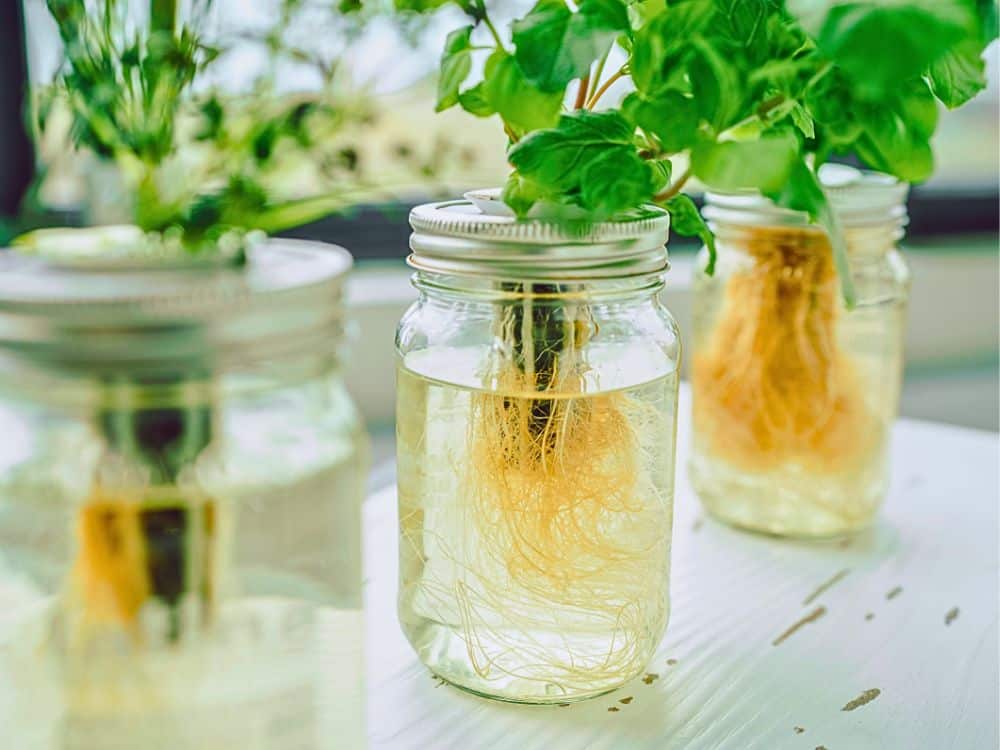
One of the most exciting applications of hydroponics is on the homefront.
City-dwellers who already embrace apartment composting, sustainable gardening, and clever food waste solutions understand that taking control of your own food and waste is an empowering opportunity to provide nutritious produce for personal consumption
Here are some of the best hydroponic plants to consider growing:
- Greens: green beans, peas, cabbage, cauliflower, celery, broccoli, lettuce, leek, spinach, kale
- Vegetables: tomatoes, beetroot, onion, carrot, cucumber, aubergine, pepper, radish, courgette
- Fruit: strawberry, blueberry, raspberry, grape, cantaloupe, melon, and even dwarf tree fruits like lemon or apple
- Aromatic plants: rosemary, thyme, sage, basil, coriander, mint, tarragon
Types Of Hydroponic Grow Systems
There are two main types of indoor hydroponics: an active system and a passive system.
The main difference here is that an active system uses pumps to circulate water from a reservoir to the roots and back, whereas a passive system uses no pumps, with plants simply suspended in a water solution that must be changed fairly regularly.
Without getting too “nitty-gritty,” there are a number of different indoor hydroponic systems worth familiarizing yourself with before you choose the best option for your home growing needs:
- Aeroponics: Roots are suspended in the air and irrigated with a nutrient-dense mist. This differs from pure hydroponics, where plant roots are submerged in the nutrient solution.
- Aquaponics: Nutrient-rich water comes from raising fish, which provides a natural fertilizer for the plants and in turn, the plants help to purify the water for the fish. Longstanding and popular farming method in Asia.
- Nutrient Film Technology: A very shallow stream of water with all the dissolved nutrients required for plant growth is re-circulated past the bare roots of growing plants in a watertight channel.
- Deep Water Culture: Plant roots are suspended in a solution of oxygenated, nutrient-rich water.
- Wick System: A cotton or nylon wick helps the plant absorb water and nutrients by supplying it to the plants in trays.
- Ebb & Flow: Uses aquarium pumps to circulate nutrient-rich water past trays of submerged plant roots.
5. Brands Of Indoor Hydroponics Setups
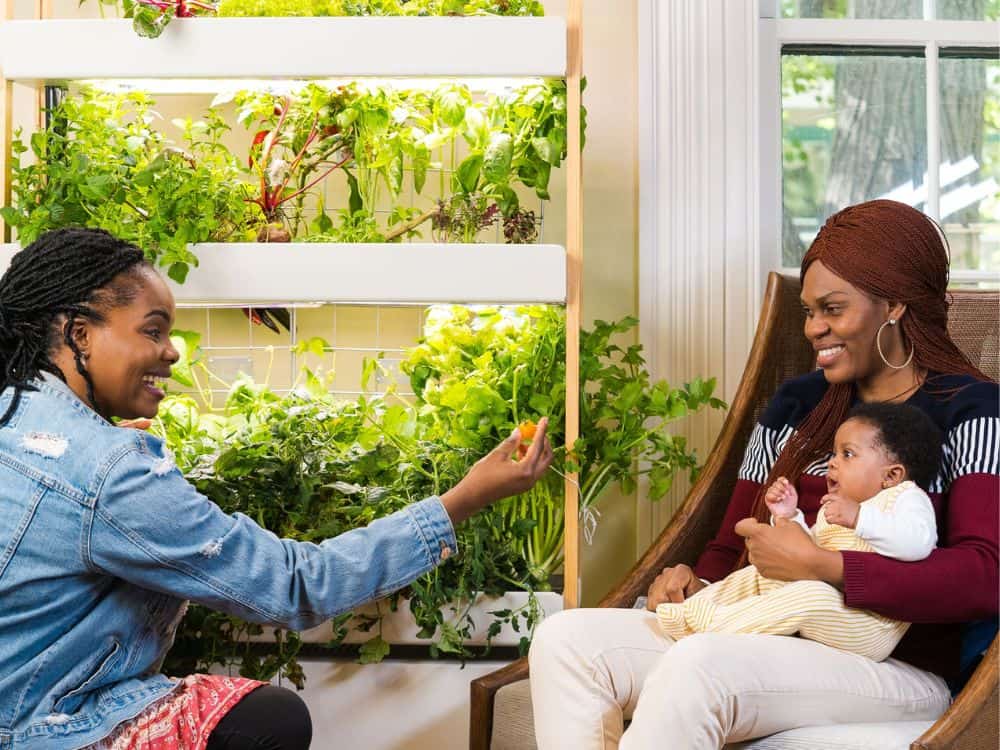
Hydroponic setup may sound daunting, but it doesn’t have to be.
While you can certainly take the cheaper, more demanding DIY approach, a rise in new high-tech smart growing solutions caters to those who want a little more self-sufficiency when it comes to food without much effort.
Here’s a selection of some of our favorite (and affordable) hydroponic home growing kits:
Véritable
Get your roots wet by starting simple with the Exky Classic or go all-in with the app connected Veritable Connect—and every ergonomic, silent option in between.
All kits feature LED grow lights and cutting-edge automatic irrigation systems to provide top-notch growth.
Rise Gardens
Green thumbs up here or being nearly fool-proof for even the most terrible of plant parents.
With four models available, we suggest the fairly-priced and easy-to-assemble Personal Rise Garden, which grows twelve plants year-round, with harvests as fast as 30 days.
All systems connect to the internet, and their mobile app tracks plant needs, like nutrients, water, and seed-to-table timeframe.
Supercloset
Offering the “World’s Easiest & Most Effective Hydroponic Grow Systems”, Supercloset has hydroponics setups of all styles and sizes.
If you’re short on space and don’t want your indoor garden taking up your house, their Grow Boxes keep your sprouts nearly tucked away while in an unassuming cabinet as they grow.
If you’re shorter on funds, forgo the cabinet and opt for just the growing essentials with the Hydroponic Bucket System.
Did you know we Have a Newsletter?
We cover the latest in sustainable living, fashion, zero waste, beauty, travel, finance and more…
Final Thoughts On Hydroponic Garden Benefits
While by no means a total replacement for our wider food system, the time is more crucial than ever now to develop more sustainable food systems that incorporate hydroponics systems.
Alternative methods such as vertical farming and hydroponics can offer a resource-efficient and accessible way of revolutionizing the environmentally devastating global food industry—especially when implemented at the home level.
What are you waiting for?
The time is ripe to turn your piece of the concrete jungle into a proper downtown sustainable jungle by digging into benefits of hydroponic gardening and sharing this to encourage others to do the same.
Pin these:
